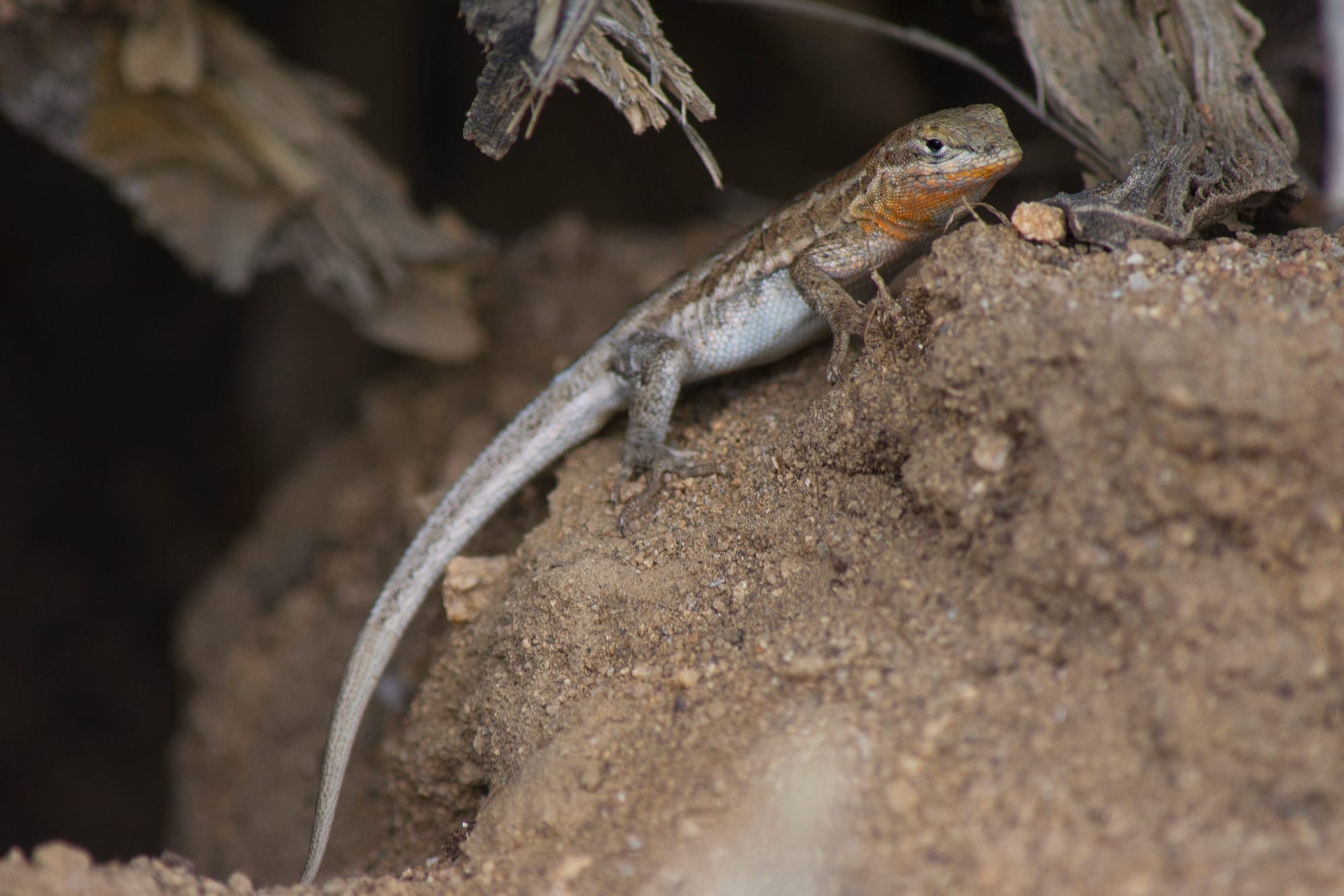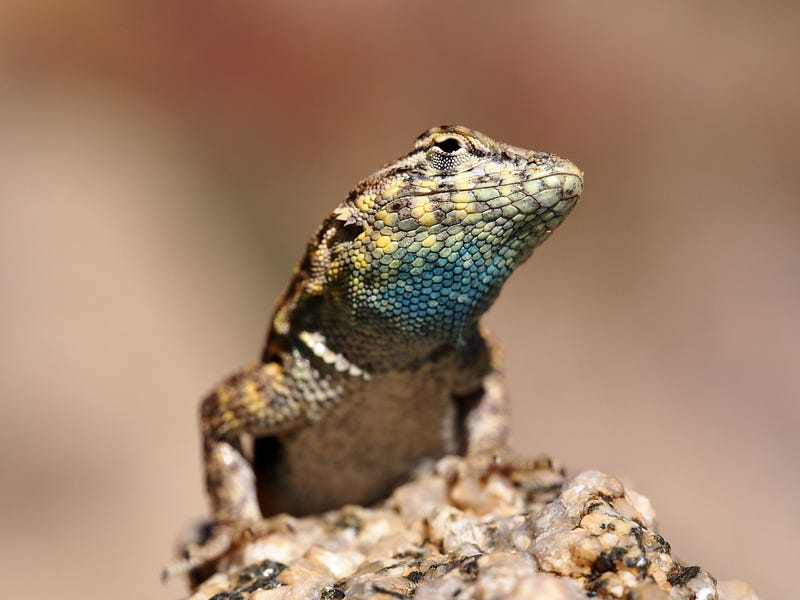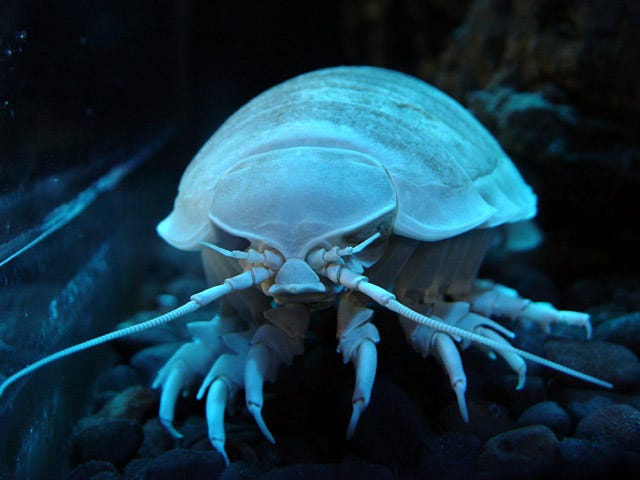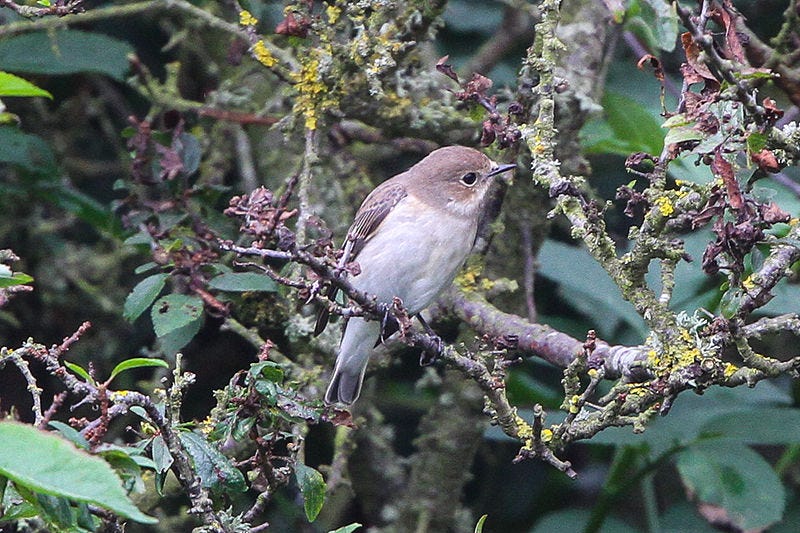
This week, we’ll be continuing the theme of reproductive mimicry from last week’s story. However, there’s a bit of a twist this time around. So far, all of the examples of mimicry discussed this season have been organisms mimicking other species. In the following examples, species will be mimicking themselves. Usually, this involves polymorphic (meaning multiple forms) males, with one or more of these forms mimicking females or juveniles.
This can be seen in species of many different types. For example, the common side-blotched lizard, Uta stansburiana, pictured above is a small lizard from the iguana Family found primarily along the Pacific coast of North America. The color of their throat patches vary and the reproductive behaviors of each of the three male colors match this coloration. These behaviors interact with each other in a form similar to a game of rock-paper-scissors.
Orange-throated males are considered ‘ultradominant’, meaning they are the largest and most aggressive. They hold large territories and keep a harem of females with which to mate. Blue-throated males are ‘dominant’. They are slightly smaller and defend smaller territories with a single female. The yellow-throated males are the mimics. Their appearance closely matches that of the females of the species. They do not defend territories, but sneak matings with unattended females in the territories of more dominant males.

Such sneaking behavior is more likely to succeed against orange-throated males, which have larger territories to defend and more females to keep track of. Blue-throated males are less likely to be fooled, but run the risk of being overpowered by a larger and stronger orange-throated male. In this way, orange beats blue, which beats yellow, which beats orange. This coloration is directly related to a single gene with three alleles and the ratios of the three different male types will vary from year to year. The nature of their competition means that the least numerous of the three will likely be the most successful in siring offspring.
These lizards aren’t the only example of this. Paracerceis sculpta is a species of marine isopod (isopods are a type of crustacean that includes both aquatic and terrestrial species such as pillbugs). This species mates inside the central cavity of sea sponges and, like the side-blotched lizards, the males have three different physical forms that are genetically determined. However, in this case, two of the forms are mimics instead of just one.

As you can see from the illustration below, there are major size differences between the three male types, represented by the first three letters of the Greek alphabet: alpha, beta, and gamma. Alpha males are the largest and behave similarly to the orange-throated male lizards. They mate with multiple females in a harem within the sponge. Beta males are smaller and resemble the female isopod, allowing them to surreptitiously mate with females in an alpha’s harem, much like the yellow-throated males above. Gamma males are the smallest, mimicking juvenile individuals.

In some birds, reproductive mimicry is used mainly to reduce aggression from other males. In species like the European pied flycatcher, Ficedula hypoleuca, males do not develop their full adult plumage until after their second year. During their second year, males possess plumage that mimics that of mature females.


Such second year males are sexually mature and able to breed, but the main purpose of this mimicry is to reduce aggressive behavior from older males instead of sneaking mating opportunities. This reduces competition during their second year against older individuals and increases their overall lifespan.
Imagine yourself as the duped males in these examples. You are a larger, more aggressive individual that can overpower other individuals. This allows you to defend a larger territory and mass a large harem of sexually available females. However, because of this, you are at increased vulnerability to infiltration from mimic males. You have a larger area to patrol and it is more difficult to differentiate any intruders from actual members of your harem. You could be extra aggressive, but this is more likely to drive away actual mates.
There’s one story left in Season 4. I hoped you’ve enjoyed this topic of mimicry. If you like my stories, please like, subscribe, and share them. If you have an idea for a topic for a future season, let me know and if I use it, I’ll give you a shout out in my introductory post.